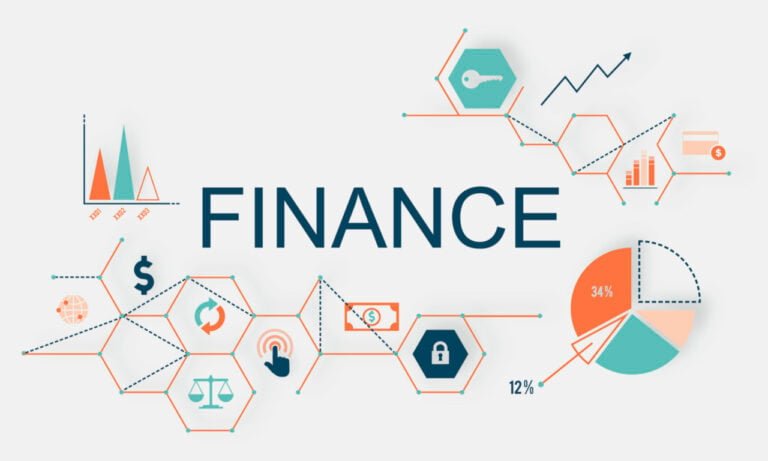In the ever-evolving landscape of modern business, the amalgamation of data-driven technologies has revolutionized the way organizations approach decision-making and strategy formulation. At the forefront of this digital transformation lie two critical pillars: Artificial Intelligence (AI) and Business Intelligence (BI). While both AI and BI center on leveraging data to drive insights and facilitate informed decisions, they operate through distinct lenses, each wielding its unique set of capabilities and objectives.
Understanding the nuances between AI and BI is essential in harnessing their combined potential to unlock unprecedented opportunities for growth and innovation. In this exploration, we delve into the differences and synergies between AI and BI, unraveling the intricacies that define their roles in shaping the future of data-driven business strategies.
Table of Contents
ToggleUnderstanding AI (Artificial Intelligence)
Artificial Intelligence (AI) is an advanced technological paradigm that enables machines to simulate human intelligence through the utilization of complex algorithms and machine learning techniques. It involves the development of computer systems capable of performing tasks that typically require human intelligence, such as learning, reasoning, problem-solving, and decision-making.
AI’s capacity to process massive datasets and derive meaningful insights has revolutionized various industries, including healthcare, finance, manufacturing, and technology. From streamlining repetitive tasks through automation to facilitating predictive analysis and enabling cognitive computing, AI has emerged as a transformative force, driving innovation and reshaping the way businesses and organizations approach data-driven strategies and decision-making processes.
Also Read: Best ai email outreach tools
Deciphering BI (Business Intelligence)
Business Intelligence (BI) is a comprehensive process of collecting, analyzing, and transforming raw data into meaningful and actionable insights, enabling informed decision-making within businesses and organizations. By utilizing a range of software applications and methodologies, BI enables stakeholders to extract valuable information from complex data sets, facilitating a deeper understanding of various business metrics, trends, and patterns. It plays a pivotal role in data visualization, translating intricate data into visually intuitive representations such as charts, graphs, and dashboards, thereby enabling users to comprehend complex information more effectively.
Additionally, BI facilitates detailed reporting mechanisms, providing comprehensive summaries of key performance indicators (KPIs) and critical business metrics, which are instrumental in evaluating the overall performance and health of an organization. Furthermore, BI tools contribute to performance optimization by identifying areas for improvement, streamlining processes, and fostering data-driven strategies that align with the overarching objectives of the business.
Also Read: 10 Websites To Find Best Software Deals
Key Differences between AI and BI
Here are some differences between AI and BI
| Key Differences between AI and BI | |
|---|---|
| Functionality | |
| AI | Focuses on emulating human intelligence, learning from data, and making decisions. |
| BI | Centers on streamlining data collection, reporting, and analysis, offering insights into past and present data. |
| Capabilities | |
| AI | Capable of complex pattern recognition, predictive analysis, and autonomous decision-making. |
| BI | Capable of data visualization, reporting, and performance optimization, providing historical and current data insights. |
| Primary Objectives | |
| AI | Aims to develop intuitive and adaptive systems, often focusing on enhancing automation and cognitive processes. |
| BI | Aims to improve data quality, consistency, and reporting, facilitating informed decision-making based on historical trends. |
| Analysis of AI and BI in the Business Context | |
|---|---|
| Data Analysis | |
| AI | Enables in-depth data analysis, identifying intricate patterns and generating predictive models for future insights. |
| BI | Facilitates data organization and visualization, allowing businesses to comprehend historical data trends and make data-driven decisions. |
| Decision Support | |
| AI | Provides autonomous decision-making capabilities, offering real-time insights and adaptive solutions for complex business scenarios. |
| BI | Offers comprehensive data reporting and visualization tools, empowering businesses to make informed decisions based on historical and present data trends. |
Synergies and Intersections of AI and BI
Here is the information presented in a tabular format:
| Synergies and Intersections of AI and BI | |
|---|---|
| Exploration of Synergies | |
| Potential | Amplifies data analysis and predictive modeling through the integration of AI’s advanced pattern recognition with BI’s comprehensive data reporting. |
| Collaborative Opportunities | Offers opportunities for leveraging AI-driven insights to enhance BI’s data visualization and historical trend analysis capabilities. |
| Real-World Examples | |
| Business Innovation | Integration of AI algorithms with BI tools to uncover actionable insights and drive innovation in product development and customer engagement strategies. |
| Strategic Growth | Utilization of AI and BI in market trend analysis and forecasting to inform strategic growth initiatives and optimize business performance. |
Also Read: How To Check Plugin Conflict In WordPress?
Implementing AI and BI in Business Strategies
Practical Insights:
- Integrate AI and BI seamlessly into operational frameworks to streamline data analysis and decision-making processes. By incorporating these technologies into existing systems, businesses can enhance their ability to process and interpret complex data sets, facilitating more informed and efficient decision-making.
- Utilize AI and BI tools to optimize workflow efficiency, enhance productivity, and improve overall business performance. Leveraging the capabilities of AI and BI tools enables businesses to automate tasks, identify trends, and gain valuable insights that can drive operational improvements and strategic growth initiatives.
Also Read: 8 Best WordPress 2FA Plugin On The Internet
Guidelines for Leveraging AI and BI Tools:
- Leverage AI-Driven Analytics:
Utilize AI-driven analytics to extract meaningful insights from complex data sets, enabling businesses to identify patterns, trends, and correlations that may not be apparent through traditional analysis methods.
Implement advanced machine learning algorithms to uncover actionable intelligence, empowering informed and data-driven strategic decision-making processes.
- Harness the Combined Power of AI and BI:
Integrate AI and BI tools to create a robust data ecosystem that facilitates comprehensive data analysis, visualization, and interpretation.
Implement customer-centric initiatives that leverage it to understand customer behavior, preferences, and market trends, enabling businesses to tailor their products and services to meet evolving consumer demands.
Develop data-driven strategies that capitalize on the insights derived from AI and BI tools, allowing businesses to stay ahead of the competition and adapt to dynamic market conditions effectively.
Does Business Intelligence Need Artificial Intelligence?
While Business Intelligence and Artificial Intelligence are distinct, they also complement each other. The term “intelligence” in AI refers to computer intelligence, whereas in BI, it signifies enhanced business decision-making facilitated by data analysis and visualization. BI aids companies in organizing the vast volumes of data they accumulate. However, neat visualizations and dashboards may not always suffice to uncover deeper insights and patterns within complex data sets.
AI can further enhance BI by enabling advanced data analysis, predictive modeling, and adaptive decision-making, thus revealing critical business insights that might otherwise remain hidden. By leveraging the combined power of AI and BI, businesses can gain a competitive edge through more informed and data-driven strategies.
Conclusion
In the ever-evolving landscape of data-driven technologies, the distinctions and synergies between Artificial Intelligence (AI) and Business Intelligence (BI) play a pivotal role in shaping modern business strategies. While AI focuses on emulating human intelligence and facilitating autonomous decision-making through advanced algorithms, BI streamlines data collection and analysis to provide valuable historical and present insights. Despite their divergent objectives, the integration of AI and BI cultivates a dynamic synergy that amplifies data analysis, predictive modeling, and strategic decision-making processes.
The collaborative use of AI’s advanced pattern recognition and BI’s comprehensive reporting capabilities empowers businesses to unlock actionable insights and drive innovation across various sectors. By harnessing the combined power of AI and BI, businesses can not only enhance operational efficiency and productivity but also gain a competitive edge through informed data-driven strategies and customer-centric initiatives. As businesses continue to navigate the complexities of the digital era, understanding the nuanced interplay between AI and BI is crucial for leveraging their combined potential to foster sustainable growth, innovation, and adaptability in the ever-evolving market landscape.
Interesting Reads:
Character AI: Everything You Need To Know
20 Best Discount Code Ideas For Sales Increment On the Internet








